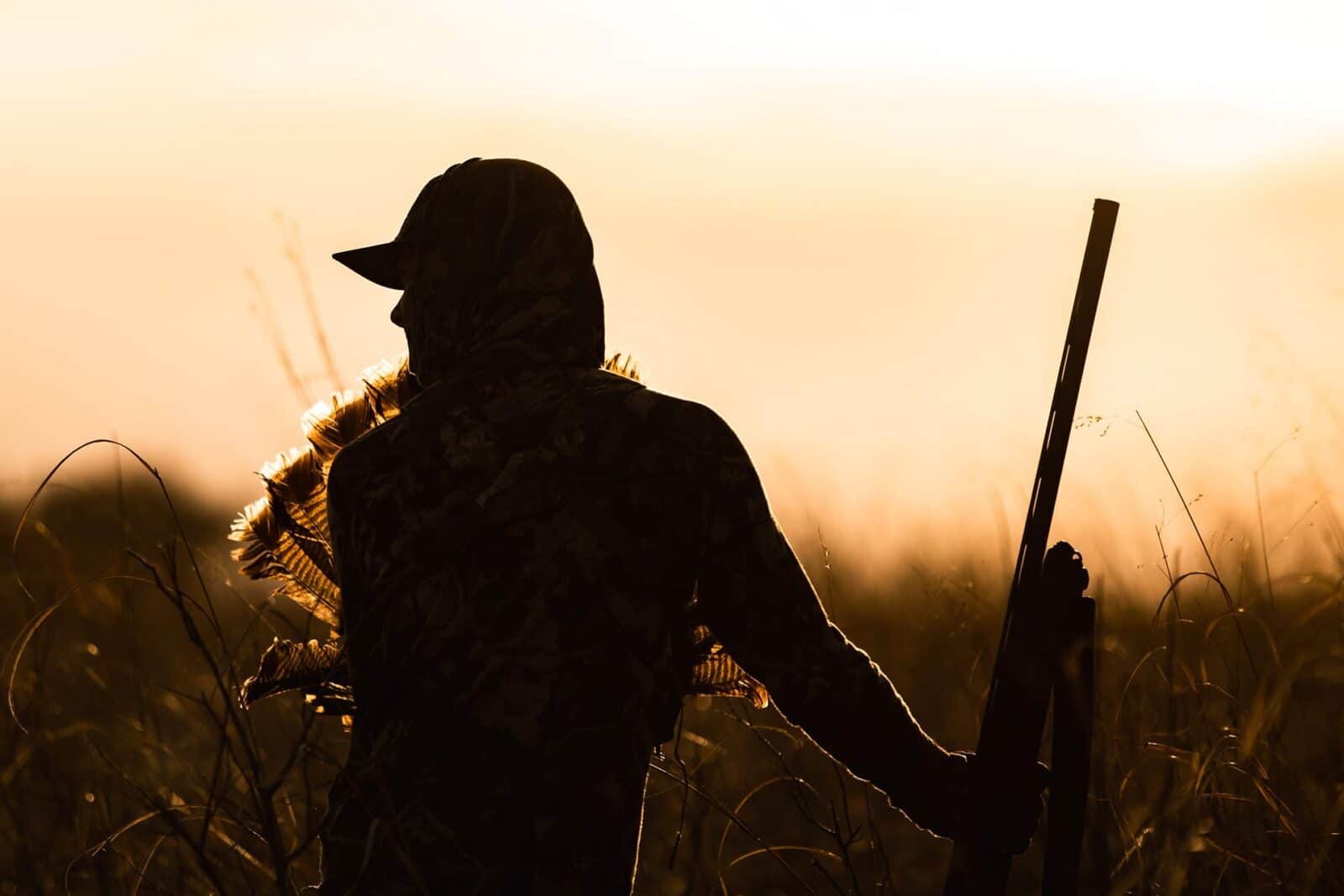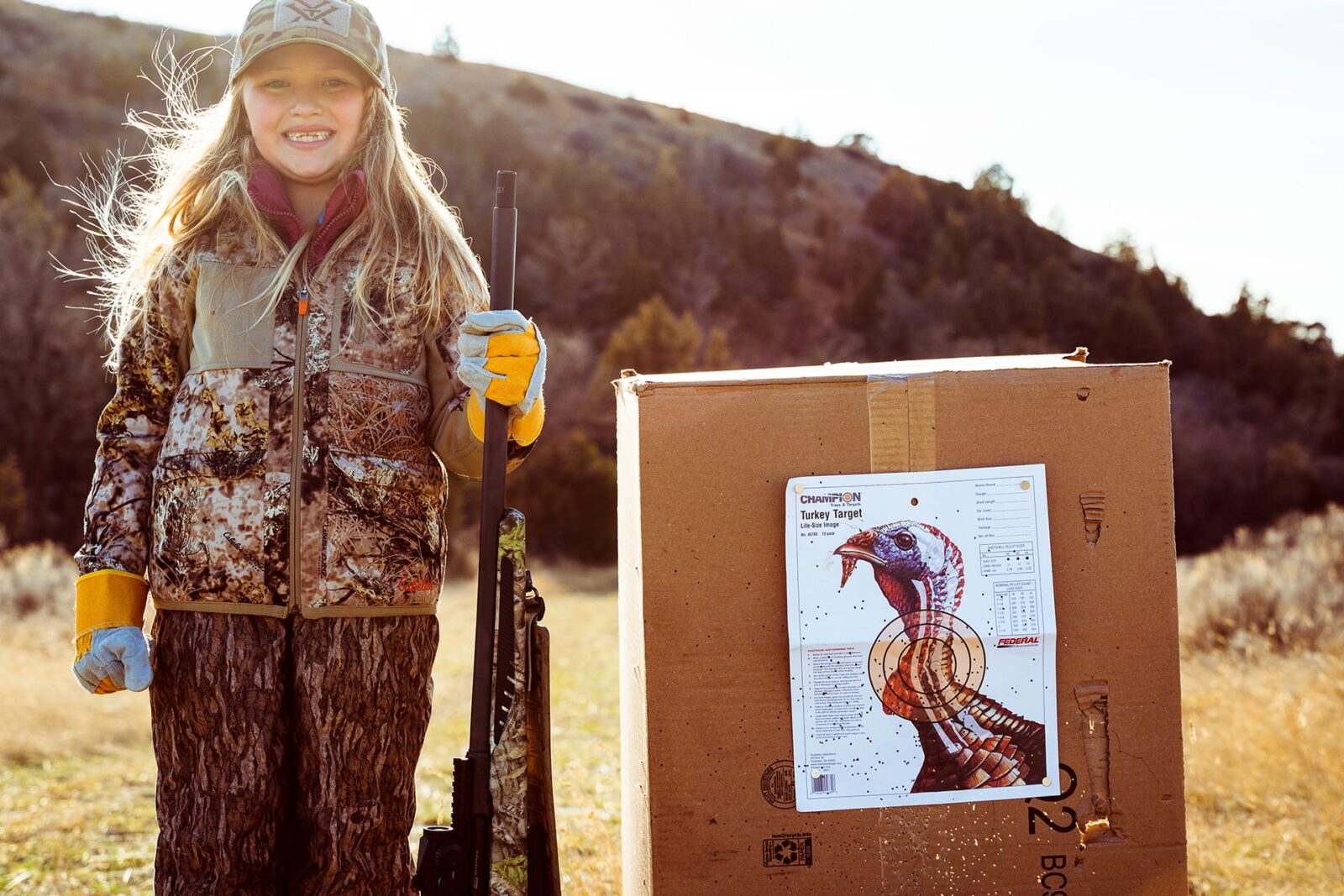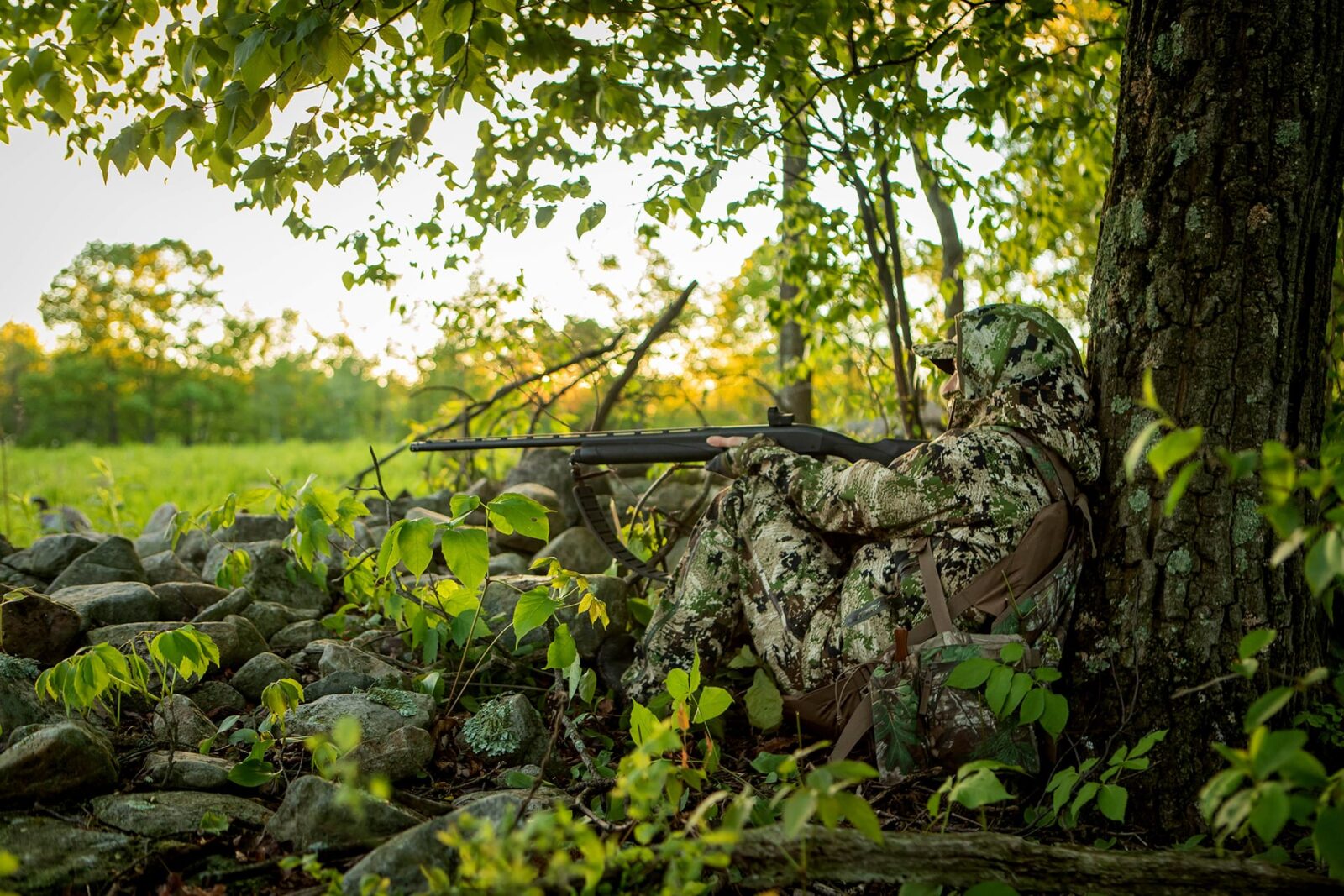Whether you’re new to hunting or a seasoned turkey hunter pursuing a Grand Slam, choosing the right turkey shotgun shell and load can make or break your next gobbler hunt. Spurred on by ever-evolving performance through improved shot material, shotgun shell manufacturers continue to fine-tune options available for waterfowlers, upland bird hunters, and turkey chasers.
At the forefront of shotgun shell innovations has been Federal Ammunition, which has been selling ammo for the past 100 years. They help us break down the perfect loads to consider for your next successful turkey hunt.
Understanding Shotguns and Shells
A shotgun is a firearm that shoots a pattern of “shot,” which are pellets made most commonly from lead, copper-plated lead, nickel-plated lead, bismuth, tungsten, or steel. The spread of these shot makes it easier to shoot moving targets (such as birds or small game); although “slugs,” which are a solid lead projectile used for big(ger) game, is another type of shotgun load but not one we’ll cover here.
Shotguns come in different gauges. The gauge is a bore measurement like that of calibers for pistols or rifles. The two most common gauges used for turkey hunting, in order, are a 12-gauge and 20-gauge shotgun. A 12-gauge has a larger, wider barrel than a 20-gauge.
Here’s how gauges of shotguns are classified. Imagine a round lead ball that fits perfectly inside a 12-gauge shotgun barrel (0.729″). It would take 12 lead balls of that diameter to equal one pound of lead. Since a 20-gauge shotgun barrel has a smaller diameter (0.615″) it would take 20 lead balls to make up one pound of lead. That’s the difference between the sizes of these guns. Shotguns also come in 10-gauge, 16-gauge, 28-gauge, and a .410 (the smallest bore shotgun available).

Shotgun shells are sold by their gauge, shell length, and shot size. The shotgun shell gauge should match the gauge of the shotgun. The length of the shells will range from 2 ½” for most small-bore guns up to 3.5” inches for long-distance shots from a 12-gauge.
Shots are categorized with an inverse naming system, where a #1 shot is larger than a #4 shot. One can calculate the diameter of the shot by subtracting the shot-size number from 17 and then dividing that number by 100. Thereby, a #6 shot would have a diameter of .11” (17-6 = 11, divided by 100, equals .11).
Just to confuse matters, however, there are larger diameter shots than #1 and they are labeled as B, BB, BBB, T, TT, and FF. The general range for shotgun shells used for bird and turkey hunting purposes, though, falls between #1 (long-range ducks) to #8 (doves, quail, and pigeons). In a moment, though, we’ll cover a #9 shot used for turkey hunting.
It’s also worth noting that “buckshot” has an even larger diameter than the shot defined above. These loads are generally for home defense and medium-to-large game, including whitetail deer. Shot sizes for these loads range from #4 (.24” diameter) to #000 (.36” diameter).
To visualize the differences in shell sizes based on gauge, length, and shot, a 2 ½” shell for a .410 will hold eight #4 buckshot pellets, but a 3 ½” shell for a 12-gauge will hold 41 of the same size #4 buckshot pellets.

Chokes and Patterning Your Shotgun
A shotgun choke is a tube that is typically attached to the last several inches of the barrel before the muzzle. Older shotguns may have fixed chokes, but nearly all newer shotguns can accept different chokes, and a selection of standard chokes usually comes with the purchase of a shotgun.
The purpose of a choke is to constrict the shot to varying degrees so the gun produces the best chance of putting the most pellets on a target at particular distances. They were invented in the mid-19th century, about three hundred years after shotguns were invented.
Chokes have names like cylinder, skeet, improved cylinder, light modified, modified, improved modified, full, and super- or extra-full. A cylinder choke is the least constrictive and a super- or extra-full choke is the most constrictive. Chokes affect the practical range for a shooter. The tighter the constriction of the choke, the farther the range. For example, a full choke is most effective at 40 to 50 yards. An improved cylinder is most effective from 20 to 35 yards.
Now before you feel the need to go buy every choke available for your gauge shotgun, take the advice of Federal Premium’s Product Line Manager for Shotshell Ammunition Dan Compton: “I would start with what chokes were included in the with the gun you bought or have on hand for turkey hunting.”
“Typically tighter is better for a turkey load,” says Compton, “but sometimes it is possible to choke too tight. This will actually make the pattern worse due apply too much constriction at the barrel. You can find an ideal combo for your type of shotgun, a certain choke tube, and an ammunition load. The key is to sample a few and see how they look on paper.”
Shooting through different chokes on paper targets is called “patterning.” It’s understanding the shape and diameter of all the shot in a shell as it hits a target at different yardages. For turkey hunters, Compton has specific advice for the ideal choke and shotshell combination and what pattern you’re aiming to achieve.
“Pattern the gun and load at turkey head target and see how many pellets you get in the head and neck at 40 yards,” he says. “You are looking for 15 or more pellets in the head and neck region to consider a load reliable at the given range. If you are getting much more than that you may be able to shoot a little further, but it’s good to find where your max range may be. Most hunters look at 40 yards as the maximum ethical range for turkey shot placement.”

What Is the Best Shotgun Shell for Turkey?
Let’s put all this information together with advice from Federal Premium to consider what the best shotgun shells are for turkey hunting. But before we get too far, we need to introduce one more factor important for choosing the right load, and that’s the material and its respective density of the actual shot used.
As we mentioned, shot can be anything from lead to steel to tungsten, and each has different properties that affect its velocity, payloads, and pellet count.
Density matters in choosing the right shotshell because it contributes to the number of pellets and the payload in each shot. Steel is the least dense, weighing 7.8 grams per cubic centimeter (7.8 g/cc). Lead was, for the longest time, the densest material at 11.34 g/cc. Copper-plated lead came on the market at 11.8 g/cc, but it was followed by tungsten about 20 years ago, which can be between 9.8 – 18 g/cc (the latter is Tungsten Super Shot, aka. TSS).
As density increases, manufacturers can increase the number of pellets in the payload because each pellet can be smaller and still achieve the same weight. To illustrate, due to their different densities, a #9 tungsten pellet weighs nearly the same as a #5 lead pellet, so that allows a 1-ounce shotshell of tungsten shot to carry more than twice as many pellets. Higher weights also mean greater inertia, which produces better velocity at range, which in turn improves penetration and terminal performance.
“Lead and copper-plated lead is a tried-and-true performer that has been killing turkeys as long as guns have been used to hunt them,” says Compton. “There are lots of options to choose from across all gauges. They are affordable shells and copper-plated lead can help with tighter patterns.
“Tungsten has been used for over 20 years for turkeys. The initial tungsten options were 12 – 13 g/cc density, but that expanded into 15 g/cc and now 18 g/cc with Tungsten Super Shot. At nearly twice the density of lead, a #9 TSS pellet has the same amount of energy on target as a #5 lead shot when the two are traveling the same speed.
“If there’s a con to shooting tungsten, it’s much more expensive than lead. But most turkey hunters shoot very few times a year, much less than other birds taken with shotshells. $5-9 per shot is expensive but it offers such greater lethality that it is worth the expense.”
In the end, it’s about choosing a load that’s both affordable and available, and one that you have patterned to the choke(s) you have. It’s a load that you’re comfortable shooting at the max distance you’ll take a shot, too. If you find that right load, great, but nothing is a guarantee. As parting words of advice on shotshells, Compton says:
“In this ammo market you may be looking for a specific load or had one recommended to you and it is hard to find or not available. You will have to be flexible when looking for turkey shells and adjust to the next smaller or larger size pellet, or a higher or lower payload. All loads will kill turkeys, so just ask questions to your fellow hunters and at the local gun store and they will get you squared away!”

12-Gauge vs. 20-Gauge For Turkey Hunting
Turkey hunting is not necessarily a “go big or go home” game, so having a 12- or 10-gauge shotgun is not a requisite to enjoying a successful gobbler hunt.
“We have seen tremendous growth in 20-gauge shotguns over the past 15 years for turkey hunting,” says Compton. “In lead loads, wad designs and choke tubes are making this possible by delivering very tight patterns that are extending the traditional ranges of a 20-gauge. TSS loads have made the 20-gauge even more viable with plenty of power and much less recoil. Do not be afraid to hunt with a 20-gauge and some TSS tungsten!”
Three Shotgun Shells Worth Considering
- Boss Tom Tungsten
- Produced for 12-gauge, 20-gauge, 28-gauge, and .410 bore, #7 or #9 shot.
- Tungsten Super Shot with a muzzle velocity between 1,100-1,150 fps.
- HEAVYWEIGHT® TSS
- Produced for 12-gauge or 20-gauge, 3” or 3.5” shells, #7 or #9 shot.
- Tungsten shot with a muzzle velocity between 1,000 – 1,200 fps. This load offers the highest pellet count possible in a shell (634).
- Tested by Outdoor Life to have the “Best Long-Range Pattern.”
- HEVI-Shot Magnum Blend
- Produced for 10-gauge, 12-gauge, and 20-gauge.
- Features their award-winning HEVI-13® pellets in a mix of shot sizes launched at higher speeds which creates a cone of lethality at any range.
- Muzzle velocity between 1,150-1,200 fps.